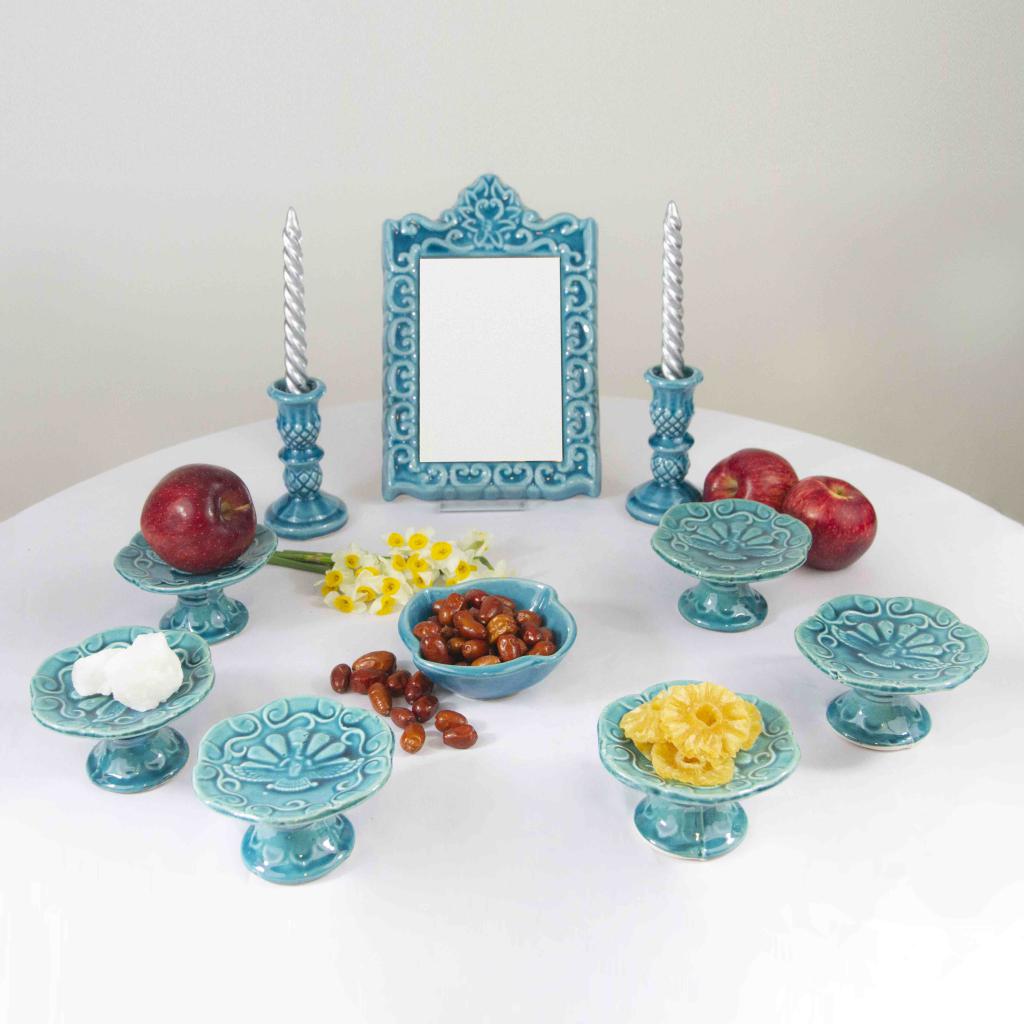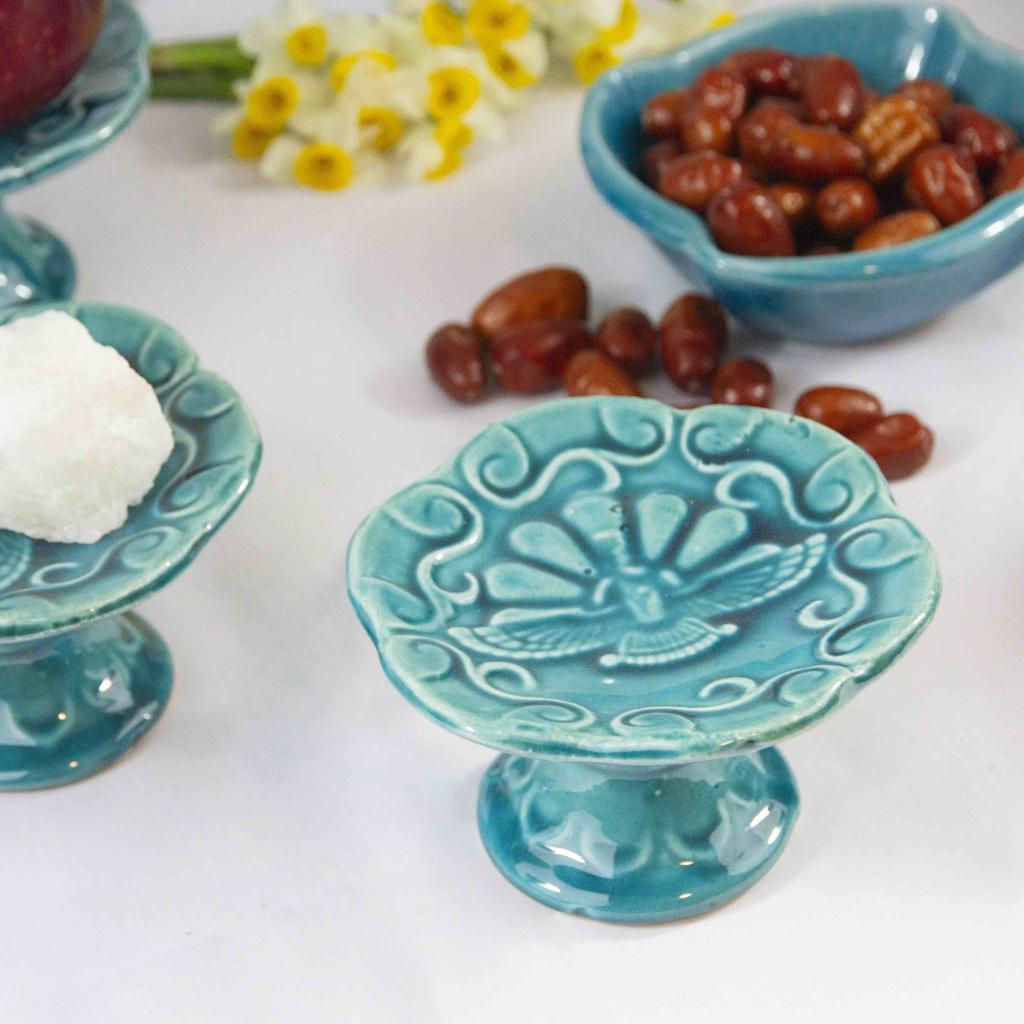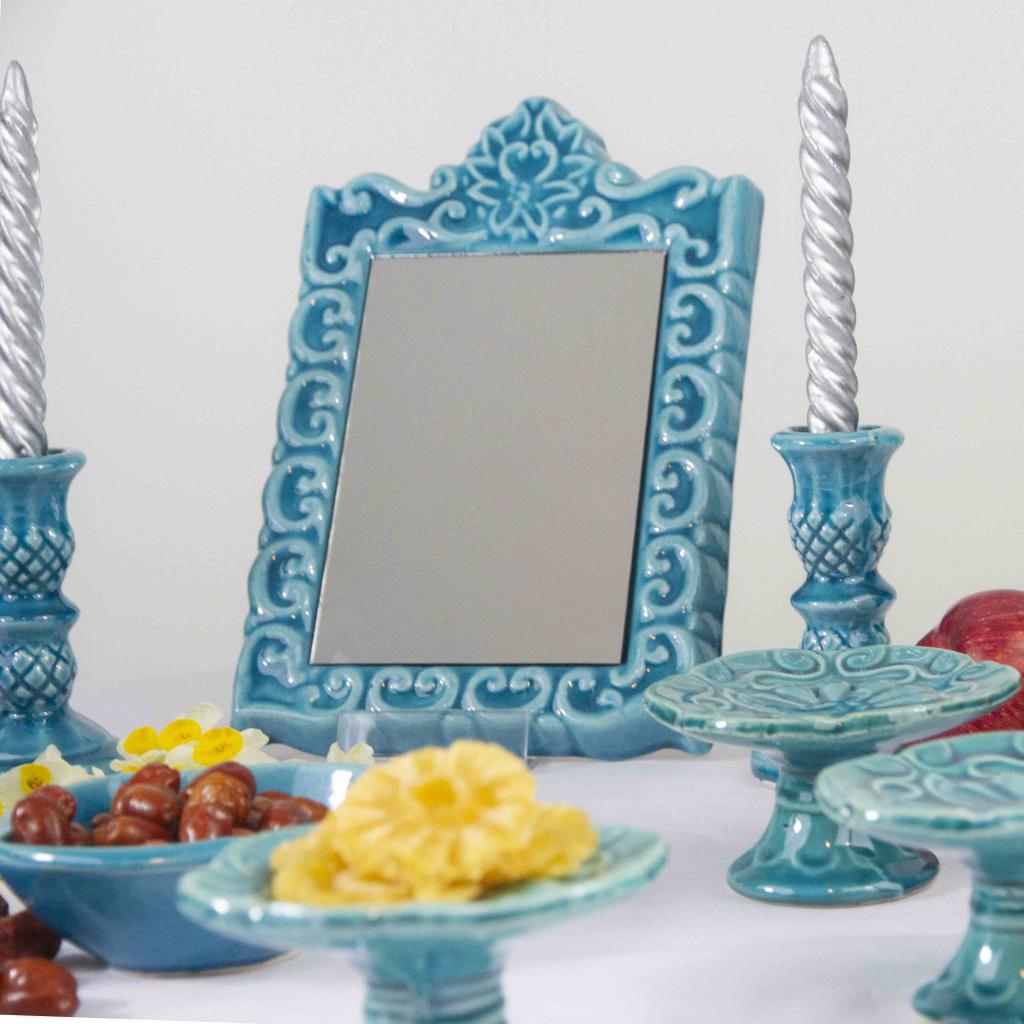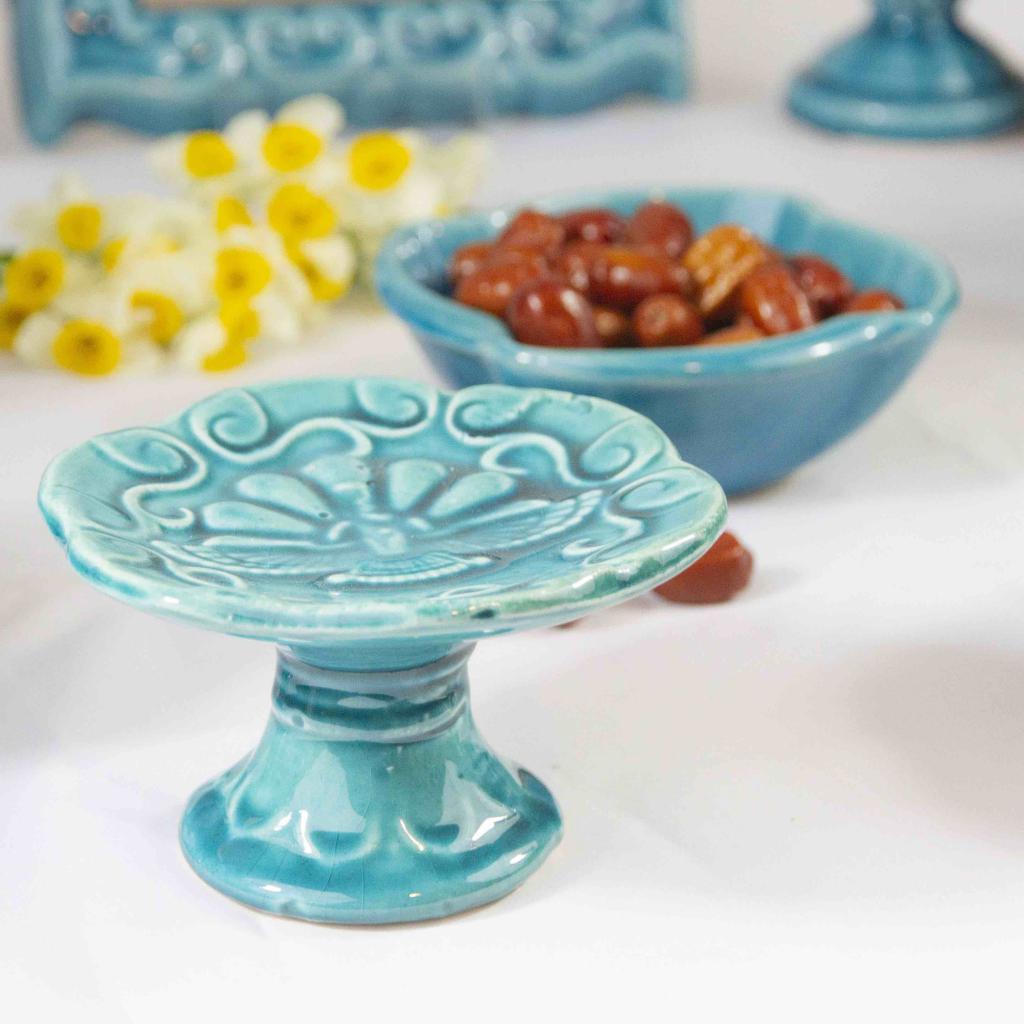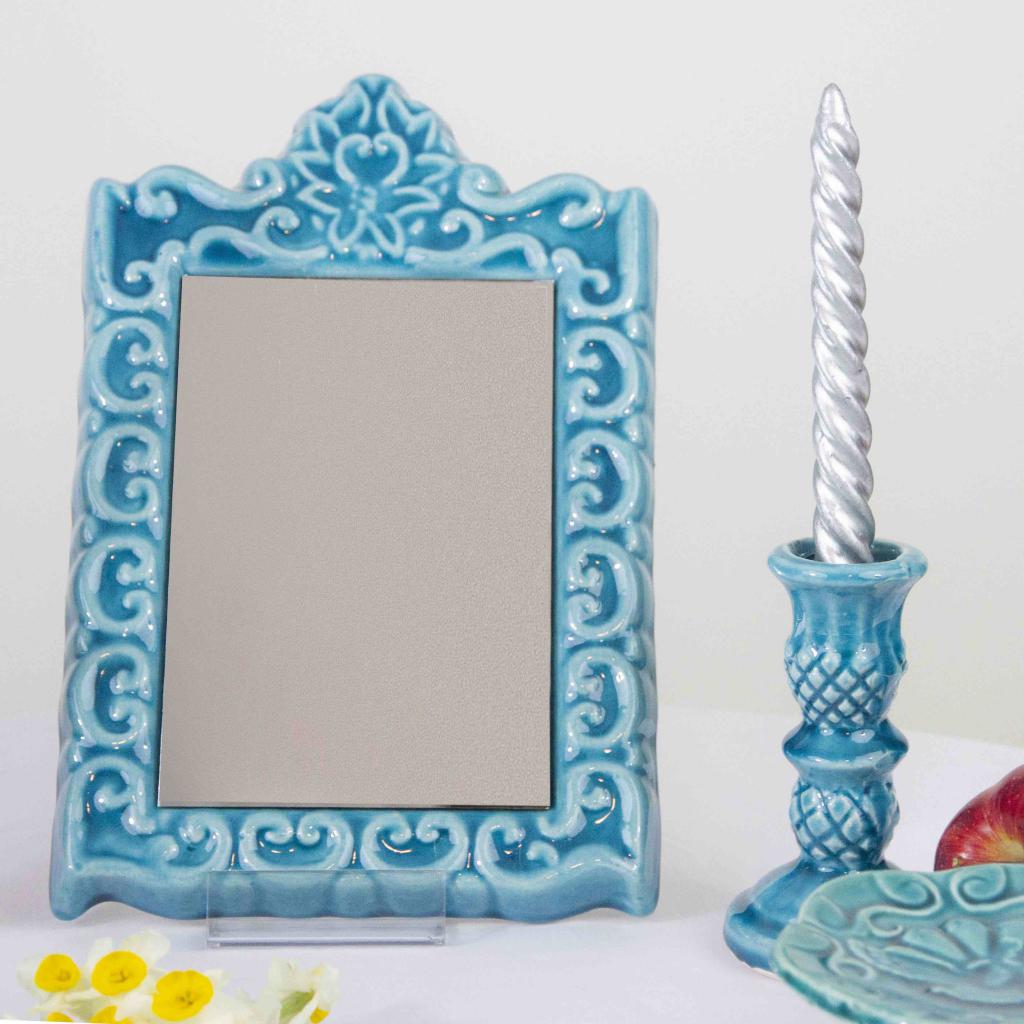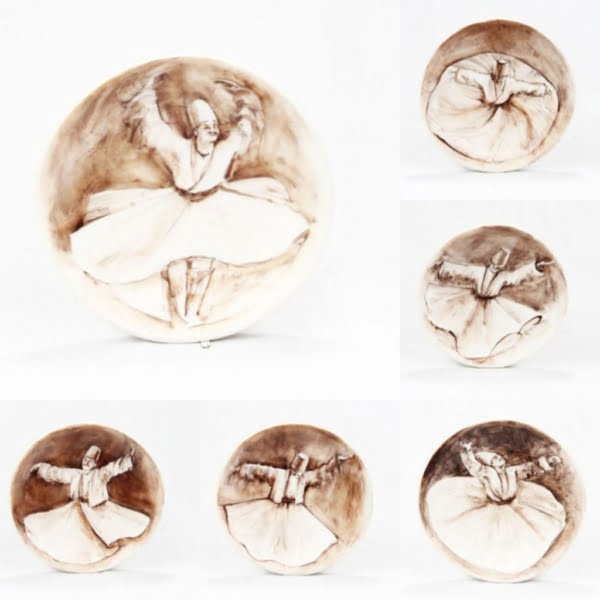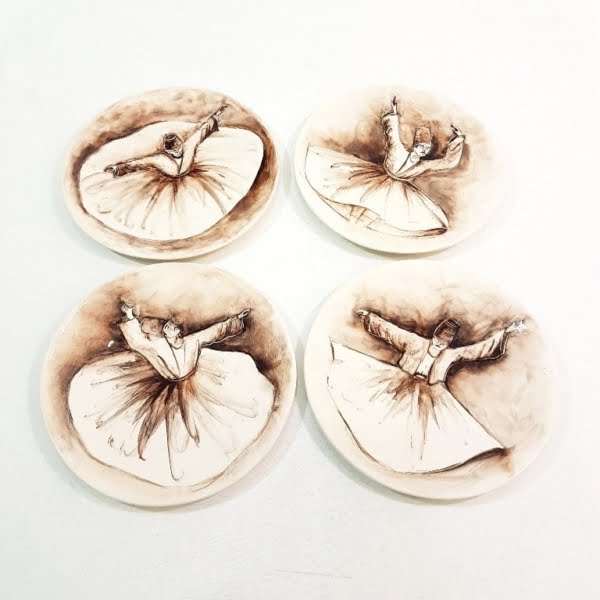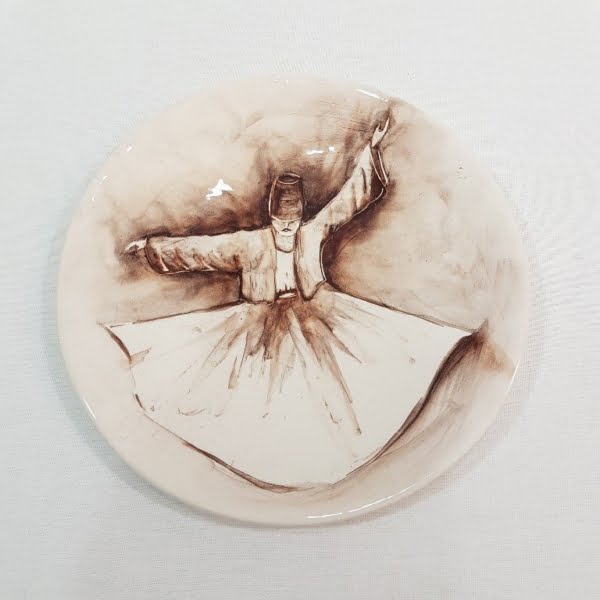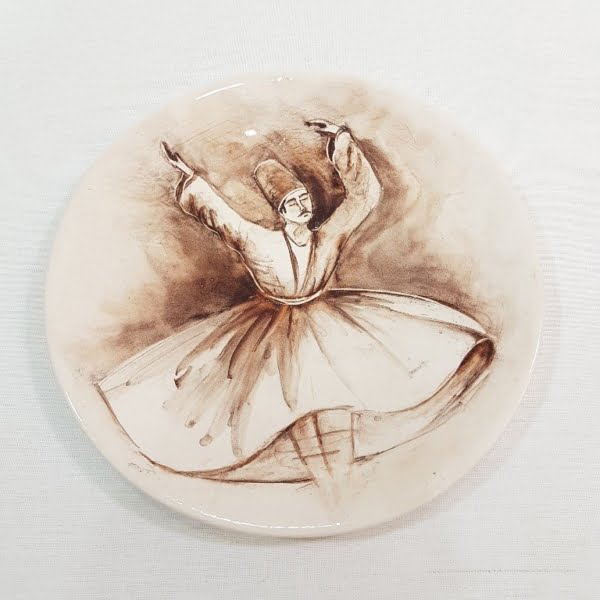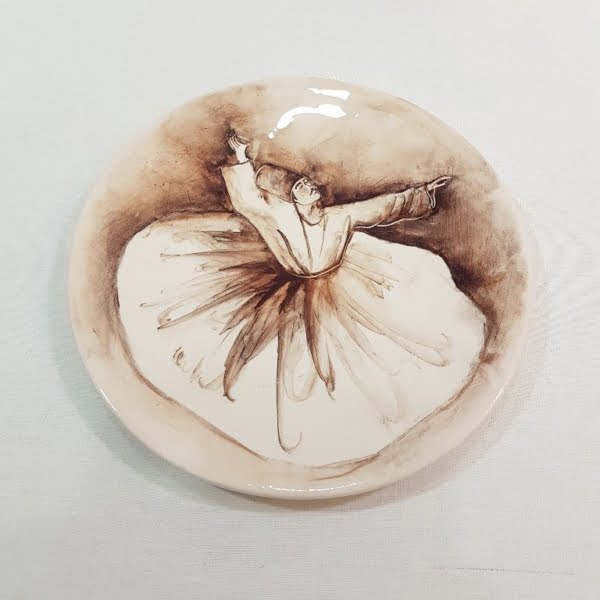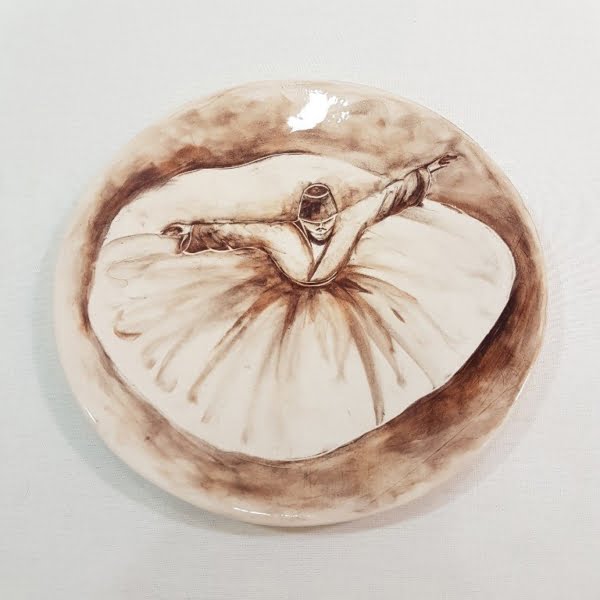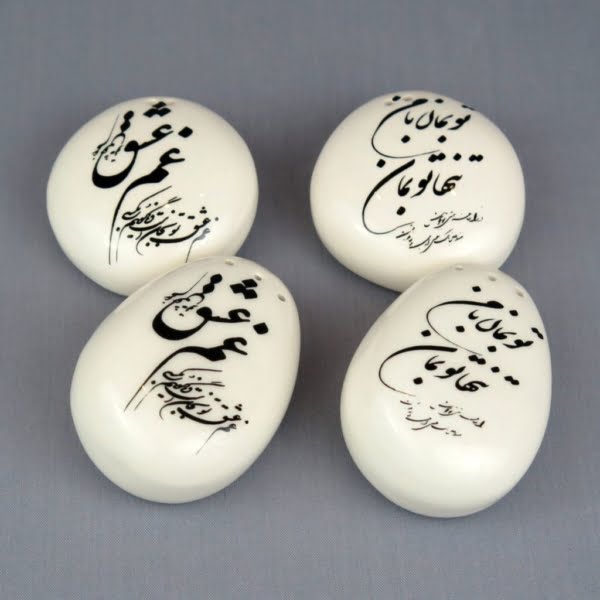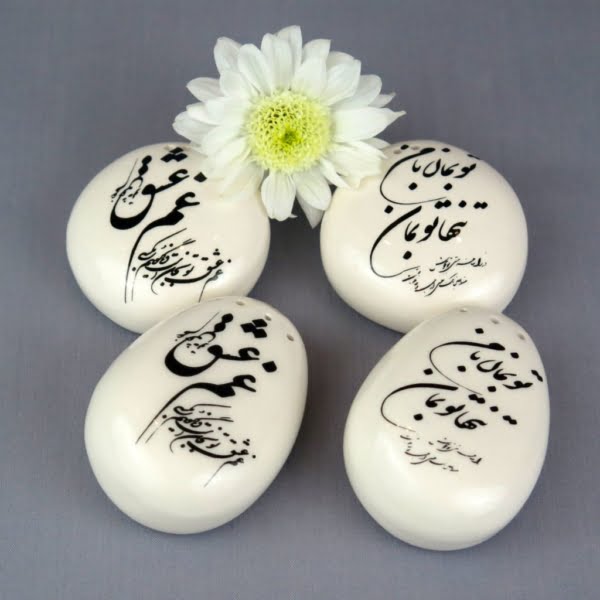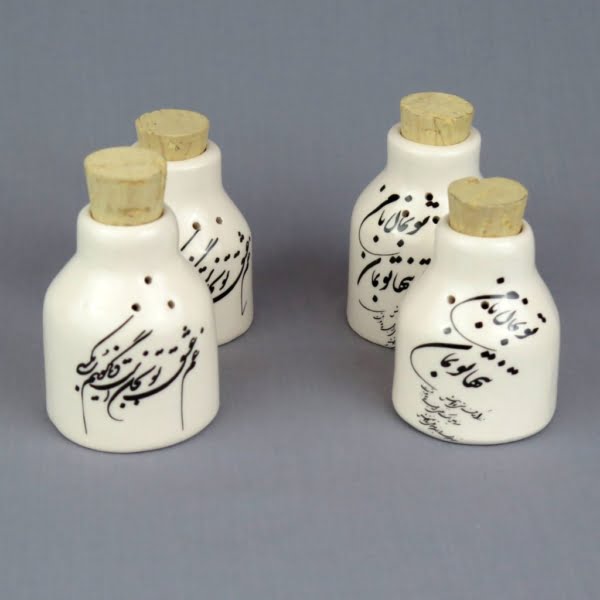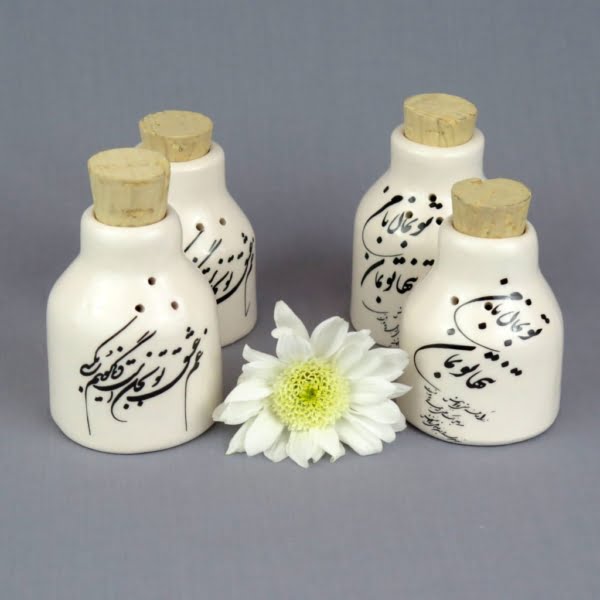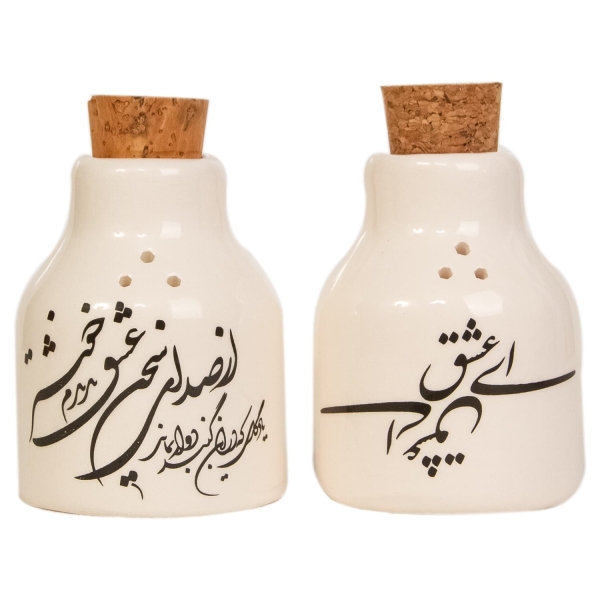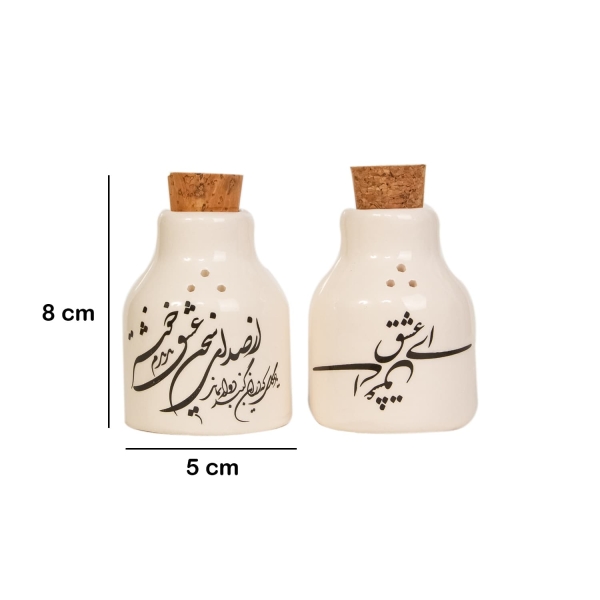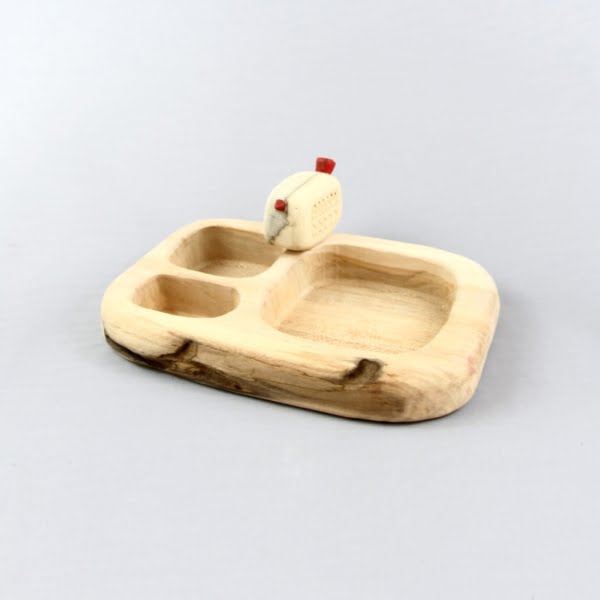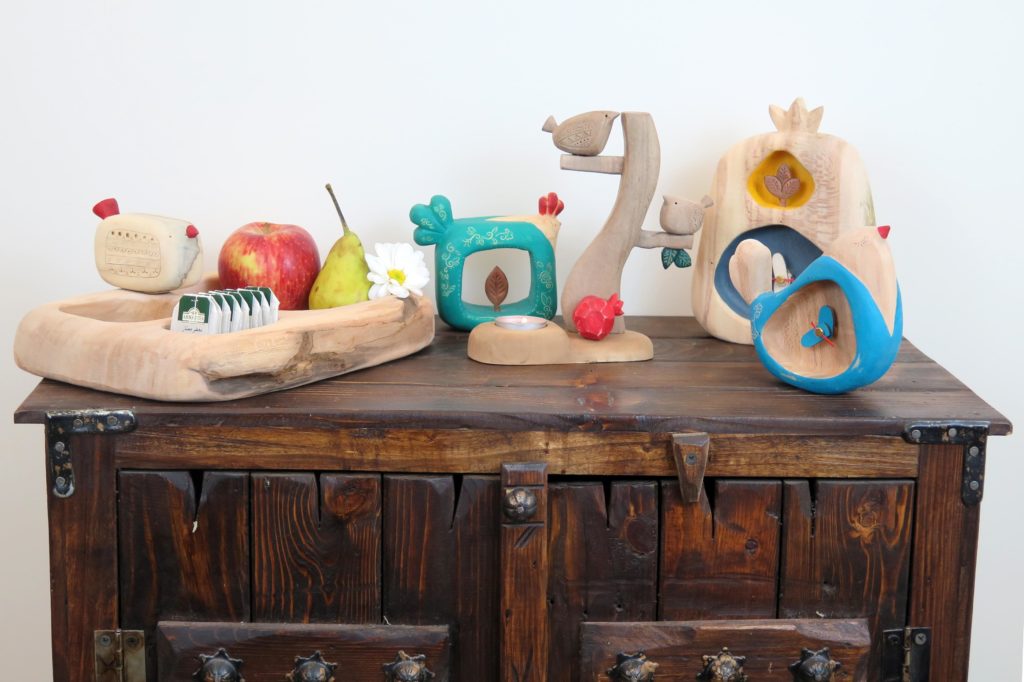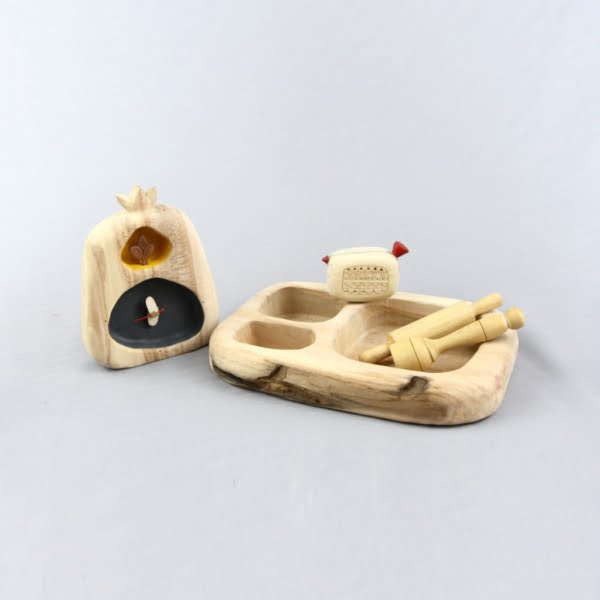FARVAHAR HAFT SIN SET
Farvahar Haft sin Set inspired by Persian art.
In the book of Avesta and according to the belief of the ancient Iranians, Forouhar is a symbol of a force or part of Ahuramazda (the only God in the Iranian Zoroastrian religion), a force that has been pledged in the existence of man and all other creatures. According to this belief, Forouhar existed before the creation of all beings and after the death of the creatures of the universe, he continues to live in another world and remains eternal. The word was pronounced “forty” in ancient Persian; In Avesta it is pronounced as “Farvashi” and in Middle Persian or Pahlavi it is pronounced as “Farvahr”.
he Farvahar is a symbol of Zoroastrianism, an ancient religion that has had a significant impact on the culture and history of Iran. It is a symbol of good deeds, good thoughts, and good words, and is considered an emblem of the Persian Empire.
It is not a traditional item to be included in Haft-sin Set, a traditional setting of seven items for the Persian New Year, however, it’s possible that some families or individuals might include an image or statue of Farvahar in their Haft-sin Set as a decorative element or as a symbol of their Zoroastrian heritage.
The Farvahar is depicted as a human-like figure with wings, and it’s said to represent the soul of a person on its journey towards enlightenment. This iconic symbol can be used in various art forms such as calligraphy, painting, sculpture or metalworking. As the Farvahar is considered a symbol of freedom, purity, and power, and it can be a way to connect with one’s heritage and culture.
It is worth noting that, Farvahar as a symbol is not limited to be used in the Haft-sin set, it can be seen in many other places in Iran, also it can be found in other places that have been under Persian influence.
Detail:
- handmade in Hamedan.
- set of 7 plate, 2 candle holders and one mirror.
- Material: Ceramic
- Colour: Persian Blue
Haft-sin is an arrangement of seven symbolic items whose names start with the letter “س” pronounced as “seen” the 15th letter in the Persian alphabet.
Discover more haft seen HERE.






